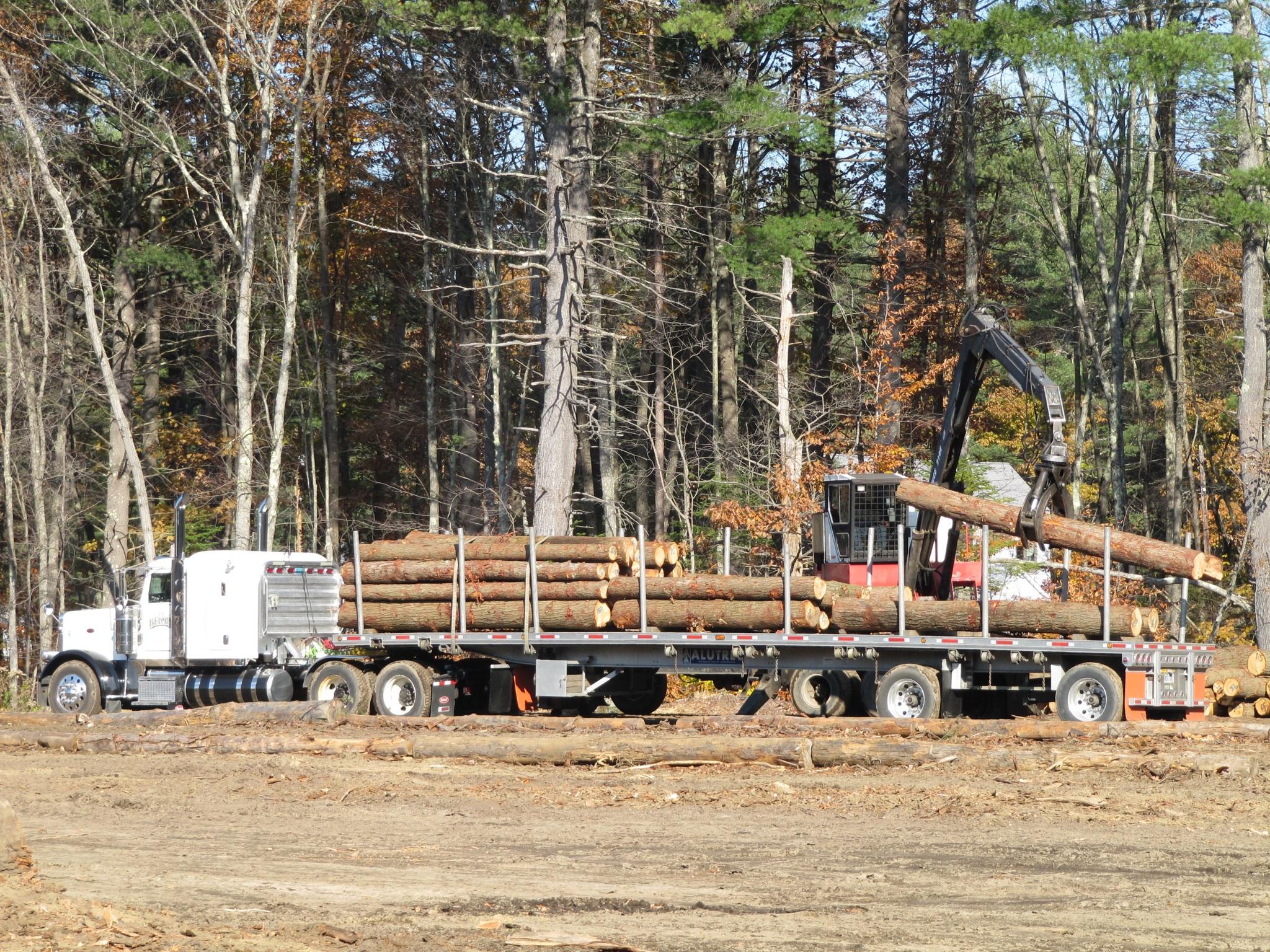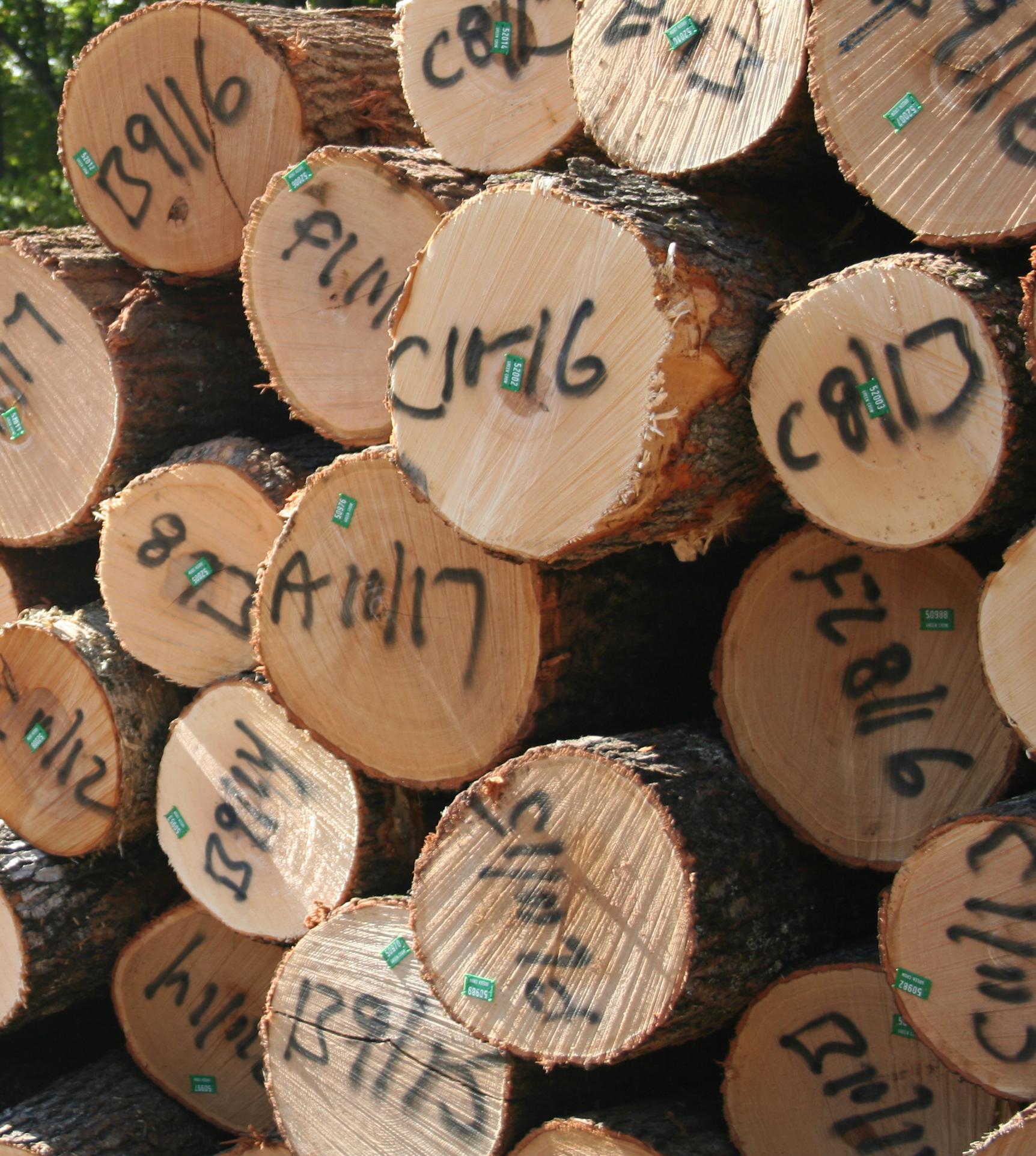Demand is Global for Our Logs
- Tags:
- Working Forests,
- Timber Harvesting

N.H. hemlock logs are loaded for their trip to Quebec from the Andover log yard of Green Crow Corporation. Photo by Scott Astle.
Loaded logging trucks: We see them all the time on New Hampshire’s roads and highways. Have you ever wondered where all those logs are headed?
When we explored this question at the Forest Society, the result was an article in our membership magazine discussing new and traditional markets for New Hampshire’s wood. Writer Sarah Earle found that while many of those logs are en route to our own mills, loads of them -- and products made from them -- are winding up in some surprising places.
Middle East countries, particularly Dubai and Pakistan, are buying New Hampshire’s eastern white pine, the same species that once was considered the sole property of King George, who alone could commission its harvest for his royal navy ship masts. “These new (Middle East) markets are just clamoring for the stuff,” Sarah Smith, a forest industry specialist for the University of New Hampshire Cooperative Extension, told Earle for her article. “They use it for trim and concrete forms and things like that. They like it because it’s easy to work with using hand tools.”

Canadian mills are hungry for New Hampshire logs, both hardwood and softwood, to turn into lumber as well as finished products like flooring. “The market is a lot better than we’ve seen in the last six or eight years. A lot of Canadian mills have started up in the last year that had been shut down prior,” said Scott Astle, export manager for Green Crow Corporation’s Northeast region.
(The Quebec market works particularly well for New Hampshire logs because of efficiency when it comes to transportation costs. Trucks that bring finished products down each morning at 5 a.m. can unload and bring logs back up by 5 p.m. the same day.)
Specialized veneer mills in nearby states attract our highest quality logs, called veneer logs and usually originating as the straightest oak, birch and maple trees. Their sought-after grains and color will ultimately beautify cabinetry and fine furniture.
Meanwhile our lower grade logs are being turned into pellets and wood chips and firewood for the growing biomass energy industry, predominantly right here in New Hampshire.
These markets and many more are increasing the demand for New Hampshire logs and providing welcome relief to the woodlot owners, loggers, foresters, mills and manufacturers stymied by the recession of 2008 and 2009. It may surprise some readers that a statewide conservation organization like the Forest Society would cheer strengthening markets that encourage logging activity, but indeed we do – if that logging activity follows best practices for sustainable forestry.
Sustainable, responsible timber harvesting has been at the heart of the Forest Society right from the beginning in 1901, when our founders joined together to fight the indiscriminate, unsustainable clearing of the White Mountains. Today the tradition of modeling and advocating sustainable logging practices continues on land the Forest Society owns throughout the state.
In the last fiscal year, our forestry staff coordinated five timber sales that covered about 450 of our 53,000 acres. These sales generated $259,000 in revenue that supports our land conservation mission. Completing between five and seven timber harvests a year is typical, and each harvest is carefully planned to improve the woodlot’s timber value or to create habitat for wildlife that require young, regenerating forests.
When the market demand is high for lower grade wood as it is now, it’s economically feasible to thin woodlots, leaving the higher quality wood to grow with less competition for nutrients and sunlight, just like weeding a garden enables your vegetables to grow better.
But the most compelling reason for conservationists to cheer strong wood markets is simply this: The more profitable it is for landowners to keep their land intact and manage it for timber harvesting, the less likely it is that they will subdivide it or sell it into development.
Loaded logging trucks: If those logs were harvested the right way, they bode well for our economy and for land conservation.
